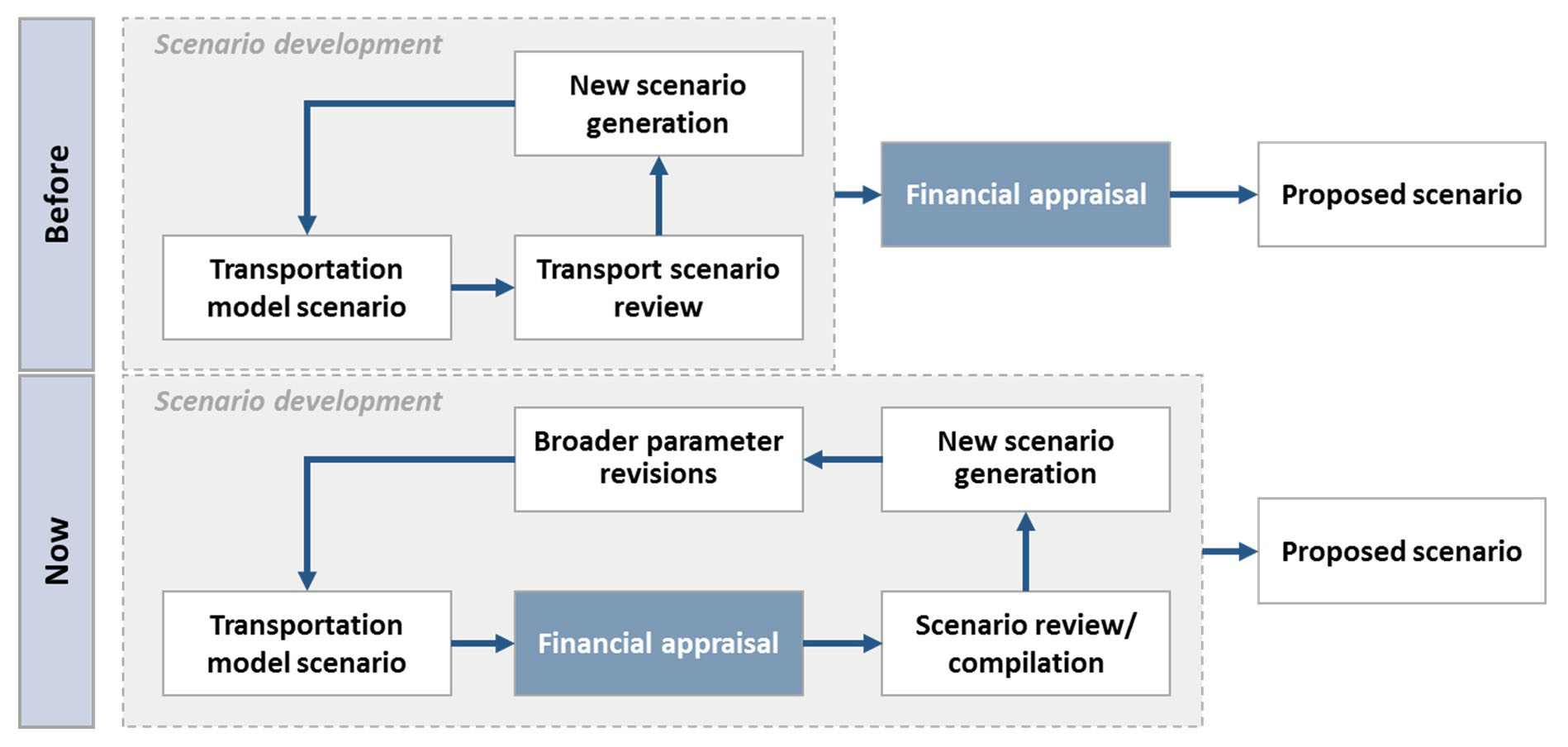14.1Importance of Financial Modelling
When it is obvious that the goals cannot be reached, don’t adjust the goals, adjust the action steps.Confucius, philosopher, 551 - 479 BC
Previously, transportation studies and financial appraisals were treated as separate entities, and they did not move at the same speed. The problem with this approach is that sound technical plans may have been developed, which, once finished, proved to be financially unsustainable and required significant changes. Not only would this result in unwanted project development costs for necessary alterations but also political costs, due to the postponement of the operational plan and possible tender definitions. Additionally, decision makers might have to roll back already made decisions, at an even greater political cost, or condemn the city to otherwise avoidable subsidies.
The correct approach to developing successful transportation plans is to develop the operational plan and the financial modelling simultaneously, utilizing the results of one to guide the refinement and development of the other. For each scenario, a detailed financial analysis is conducted, which then feeds back into the scenario development process.

An added benefit of approaching scenario development in this fashion is that it is possible to generate awareness of financial implications as scenarios are being developed. This not only helps steer the scenarios toward more sustainable alternatives, but also prepares decision makers for decisions regarding the following issues:
- Subsidy analysis (if subsidies exist, the analysis includes: subsidy amount, one-off subsidy, operational subsidy, or subsidy cap limits);
- Technology choice and vehicle composition (with/without AC, Euro IV/Euro V fleet, type of fuel);
- Number of system operators (depends on levels of minimum scale);
- Tariff schemes;
- Financing options/government guarantees.